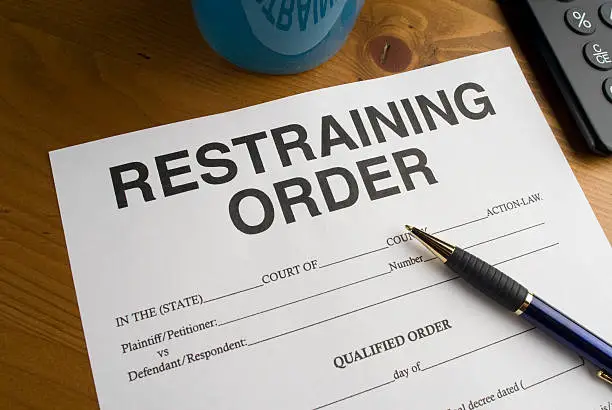In the realm of family law, protective orders play a crucial role in safeguarding individuals from domestic violence and abuse. Filing a protective order can be a lifeline for those facing imminent danger or harm within their households. This comprehensive guide provides a step-by-step overview, empowering individuals to navigate the legal process of obtaining a protective order with clarity and confidence.
Understanding Protective Orders
The Purpose and Types of Protective Orders
Protective orders, commonly known as restraining orders, serve as legal safeguards designed to prevent contact or proximity between an alleged abuser and the victim. Different types of protective orders exist, each tailored to specific circumstances, such as domestic violence, harassment, or stalking.
Common Types of Protective Orders

- Domestic ViolenceProtective Orders (DVPO): Aimed at preventing further abuse within a domestic relationship.
- Civil Harassment Orders: Applicable in cases of non-domestic relationships involving harassment or credible threats of violence.
- Elder or Dependent Adult Abuse Restraining Orders: Geared towards protecting elderly or dependent individuals from abuse.
Eligibility and Jurisdiction
Eligibility criteria for obtaining a protective order vary by jurisdiction but often include a close relationship between the parties involved, such as family or household members. Understanding the specific criteria and jurisdictional nuances is crucial before initiating the filing process.
Step-by-Step Guide to Filing a Protective Order
Step 1: Assessing the Immediate Danger
Before initiating the legal process, individuals must assess the immediacy of the danger they face. If there is an imminent threat of harm, seeking emergency assistance from law enforcement is paramount. In situations where immediate danger is not present, victims can proceed with filing a protective order through the civil court system.
Step 2: Gathering Essential Information
Documenting Incidents
Compile a detailed record of incidents involving abuse or harassment. Include dates, times, locations, and descriptions of each occurrence. This documentation serves as crucial evidence during the legal proceedings.
Collecting Supporting Documents
Gather any supporting documents such as medical records, photographs, or witness statements that corroborate the allegations. These documents bolster the credibility of the protective order request.
Step 3: Accessing the Necessary Forms
Visit the official website of the relevant court or contact the courthouse directly to obtain the necessary forms for filing a protective order. These forms typically include a petition or request for the protective order, along with supporting documents.
Step 4: Completing the Forms

Thoroughly fill out the required forms, providing accurate and detailed information. Be explicit about the specific incidents of abuse or harassment, ensuring the court has a comprehensive understanding of the situation.
Seeking Legal Assistance
If available, consult with a family law attorney or utilize legal aid services to ensure the proper completion of the forms. Legal professionals can offer guidance on the specific requirements of the jurisdiction and assist in crafting a compelling case.
Step 5: Filing the Petition with the Court
Submit the completed forms to the appropriate court. The filing process may involve a filing fee, although fee waivers are often available for those facing financial hardship. Upon filing, the court will review the petition and determine whether to issue a temporary restraining order.
Step 6: Temporary Restraining Order (TRO)
If the court deems the allegations credible and believes there is an immediate threat, a temporary restraining order (TRO) may be issued ex parte, meaning without the alleged abuser being present. The TRO provides immediate protection until a hearing can be scheduled.
Step 7: Serving Notice to the Respondent
Once the TRO is issued, the court will schedule a hearing where both parties have the opportunity to present their cases. Proper notice of the hearing, along with a copy of the filed documents, must be served to the respondent. This can be accomplished through law enforcement or a process server.
Step 8: The Court Hearing
Attend the scheduled court hearing prepared to present evidence and testify about the alleged abuse. The respondent will also have an opportunity to present their side of the case. The court will then determine whether to issue a long-term protective order.

Step 9: Long-Term Protective Order
If the court finds sufficient evidence of abuse or harassment, it may issue a long-term protective order, specifying the duration and conditions of protection. This order can include provisions such as maintaining a specified distance, refraining from contact, and prohibiting further acts of violence or harassment.
The Role of Law Enforcement
Enforcing Protective Orders
Law enforcement plays a crucial role in enforcing protective orders. Victims should provide copies of the order to local police departments, ensuring that officers are aware of the restrictions placed on the alleged abuser. Violations of the protective order can result in immediate legal consequences for the respondent.
Emergency Assistance
In situations where the protective order is violated, victims should not hesitate to contact law enforcement for immediate assistance. Police officers can respond promptly to enforce the order and take appropriate action against the violator.
Additional Considerations
Safety Planning
Creating a safety plan is essential for individuals facing domestic violence. This plan may include identifying safe spaces, establishing communication with trusted friends or family, and having essential documents and belongings readily accessible.
Counseling and Support Services
Recognizing the paramount importance of prioritizing the emotional well-being of individuals who have endured abuse, it becomes imperative to actively seek counseling and support services. In this journey towards healing, numerous organizations and shelters stand ready to extend a compassionate hand, providing a comprehensive array of counseling options, support groups, and valuable resources. These services are not merely lifelines; they represent crucial pathways for survivors to navigate the complex terrain of recovery, fostering resilience, empowerment, and the restoration of emotional health.
Key Takeaways for Filing a Texas Protective Order
In conclusion, the journey through the intricacies of filing a protective order reveals a critical process designed to shield the vulnerable from potential harm. This step-by-step guide serves as a compass, navigating individuals through the legal terrain with a focus on safeguarding their well-being. Filing a protective order is not merely a legal procedure; it is a profound assertion of one’s right to safety and security. As we traverse the various steps outlined in this guide, it becomes evident that the legal system provides tangible means for individuals to shield themselves from threats, abuse, and harassment.
As we conclude this comprehensive guide, it is our hope that individuals facing the need for a protective order find solace in the knowledge that legal avenues exist to shield them from harm. Filing a protective order is a proactive step toward reclaiming control over one’s life and fostering an environment where everyone can thrive without the looming threat of violence or intimidation.





